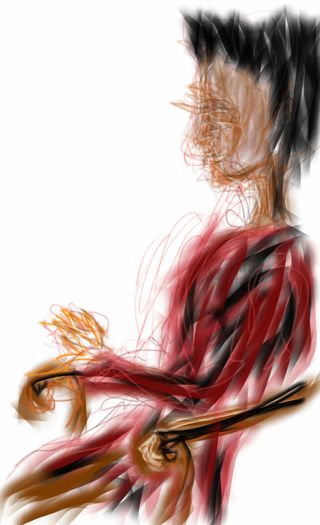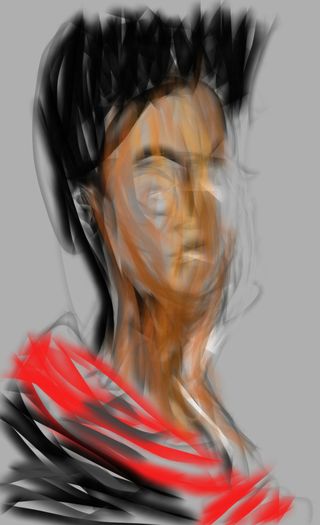Mating
Does the Color Red Hold the Secret to Attraction?
Latest psychological research on the colour red and its link to Valentine's Day.
Posted February 14, 2016 Reviewed by Kaja Perina
Editors' Note: The effects described below failed to replicate in subsequent studies.
New psychological research suggests a significant sex effect for the colour red. This colour might be unique in rendering young women more sexually attractive to men.
The latest study, conducted by two psychologists, Sascha Schwarz and Marie Singer from the Technische Universität Dortmund, and the Bergische Universität Wuppertal, Germany, was partly inspired by previous work which found, for example, that when a woman wore a red T-shirt, men chose to sit closer to her, than a woman wearing blue. Another previous study found women wearing red in a bar were more approached by men.

The latest investigation has recently been published in the Journal of Experimental Social Psychology and the authors focused on the impact of the color red, because this tint appears to have been connected to sexuality for thousands of years.
Archaeological records from Africa apparently reveal that women extensively used red ochre and other red pigments for cosmetic purposes, and as a symbol of their fertility. Even today in parts of Africa women still display red ochre during wedding rituals.
The study entitled, 'Romantic red revisited: Red enhances men's attraction to young, but not menopausal women', contends that even today, red is rated as a very positive colour, because it is associated with love, passion, and warmth.
The study chose to investigate the reaction of men to younger and older women, because it was deciding between two main theories as to why men appear more attracted to women if they wear red.
The first theory is that there is a cultural connection between red with romance—for example—red is paired with hearts on Valentine's Day to symbolize romantic affection. There is also an association with sex—in many societies, red signals sexual availability in "red-light" districts.
The second theory is that men are attracted to women wearing red because of our biology, not because of culture. In some female primates, increased sex hormone levels just prior to ovulation, when the female is most likely to conceive should she have intercourse, leads to increased blood flow to the periphery of the body, thereby causing the skin at the genitals and face to become redder. Male primates appear to become sexually attracted to these outer markers that ovulation is occurring inside females, and so, should mating occur, males have a better chance of passing on their genes to future generations.
Psychologists also argue that women's face, neck, and upper chest redden during the blush of flirtation and the flush of sexual arousal. As previous psychological research has found that when nearing the part of their monthly cycle where ovulation occurs, women wear more revealing clothing, so their slightly redder skin will also be more apparent to men. Psychologists believe these effects are most probably going on below conscious awareness.

The new study found men were more attracted to a young woman in front of a red background than to the same 'target' in front of a white background. The experiment was repeated with an older looking woman however, and then the background colour had no significant effect on the sexual attractiveness of an older woman.
The older looking woman was perceived to be aged 48-years-old on average, while the younger woman was perceived to be aged 24-years-old on average, by the men.
While red had an impact on the sexual attractiveness of the younger woman, as the older woman was not perceived as more sexually attractive against the red background, these findings cannot be explained by simple perceptual mechanisms, whereby red is just found to be a more attractive or pleasant colour.
If it was, then following this reasoning, the older woman should also be perceived as more sexually attractive against the red background.
It could be that red is perceived as a clue to a woman's ovulation status, whether she has reached the fertile stage of her monthly cycle, and as the older woman was probably nearing menopause, so red was not a valid cue to fertility any more.
The authors to the study, Sascha Schwarz and Marie Singer, did believe that the 'red effect' seems to be rather automatic and probably below awareness.
In other words if a man does find himself more sexually attracted to a woman wearing red, he won't be consciously aware his desire is being stimulated because of the colour.
Psychologists Andrew Elliot, Jessica Tracy, Adam Pazda and Alec Beall conducted a further very similar experiment, published in the same issue of the same academic journal, and concluded that the red effect appears almost universal across the globe.

They came to this conclusion by repeating the same study method, but instead of studying European men and women, Elliot, Tracy, Pazda and Beall examined the impact of red on an isolated traditional small-scale society in Burkina Faso, Africa.
They chose this remote place because the men there would be unlikely to be influenced by western cultural assumptions about the symbolic erotic power of red, as exemplified by the Valentine's Day card industry.
Any impact of red on male sexual attraction might then be more likely down to biological theories.
Another reason for picking this distant community was that red carries explicitly negative associations in this particular culture. In Burkino Faso, red represents bad luck, sickness and death. Furthermore, red carries no overt romantic connotations.
The results of the study, entitled, 'Red enhances women's attractiveness to men: First evidence suggesting universality', indicated that the red effect on attraction is present in Burkina. The authors argue these findings represent the first evidence suggesting that red may be a kind of universal language of love, in the human mating game.
The authors of the study from the University of Rochester, New York and the University of British Columbia, Vancouver, conclude that the red-attraction link observed in the U.S. and Europe is also present in culturally isolated individuals living in a traditional small-scale society.
Red not only enhanced Burkinabe men's attraction to a target woman, this red effect was specific to romantic attraction.
No differences emerged in men's ratings of the woman's general likeability, suggesting that the red effect is precisely about sexual desire.
Just in case older women are thinking of giving up on fashion altogether following these results, in fact, in the German experiment, older men (average age 54-years-old) rated the older woman as more sexually attractive than the group of younger men (average age 24). Indeed the younger woman was not found more attractive by these older men, than the older woman.
So everyone's got a chance, and, as in all advertising, just know who your target audience is.




